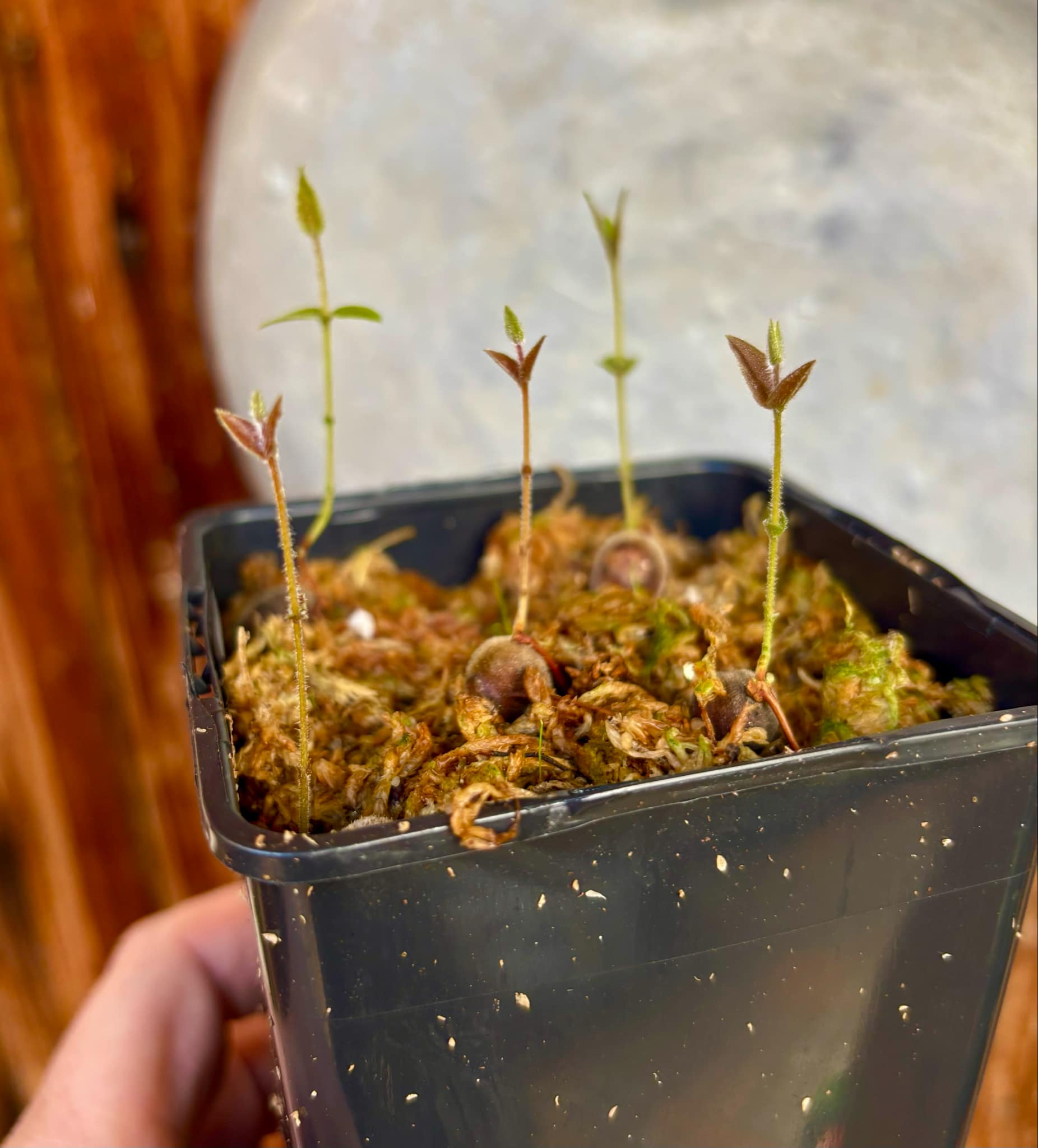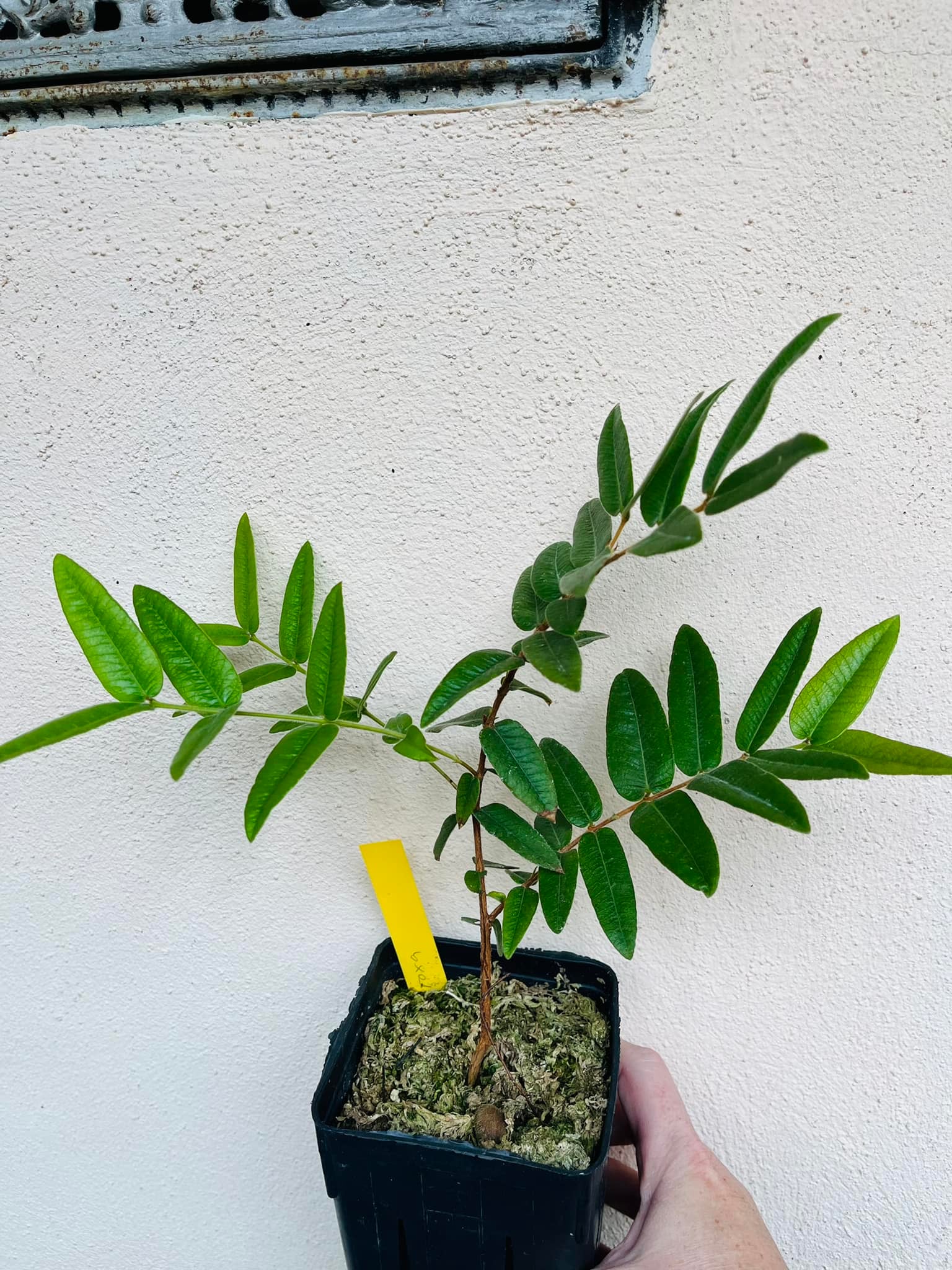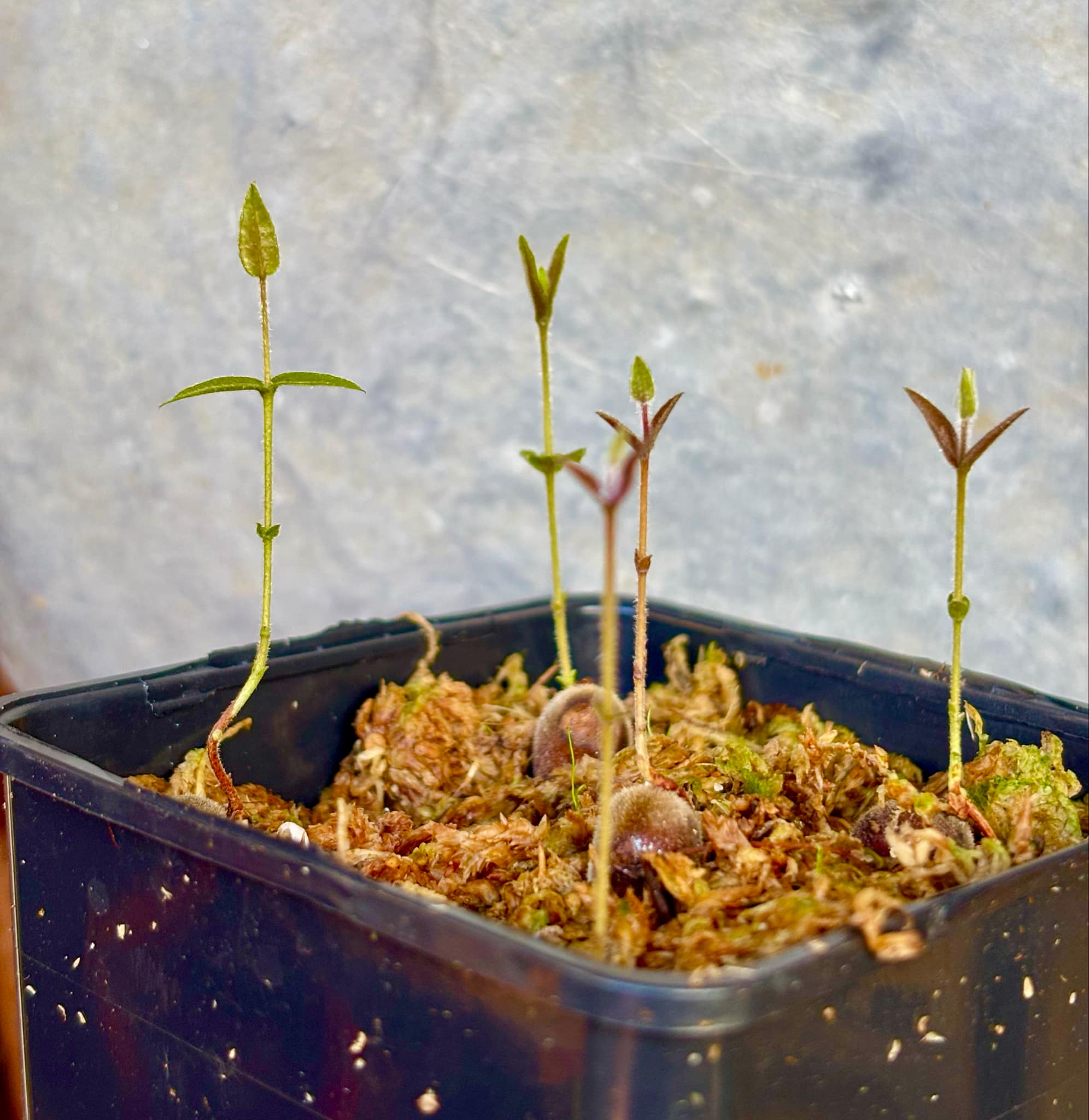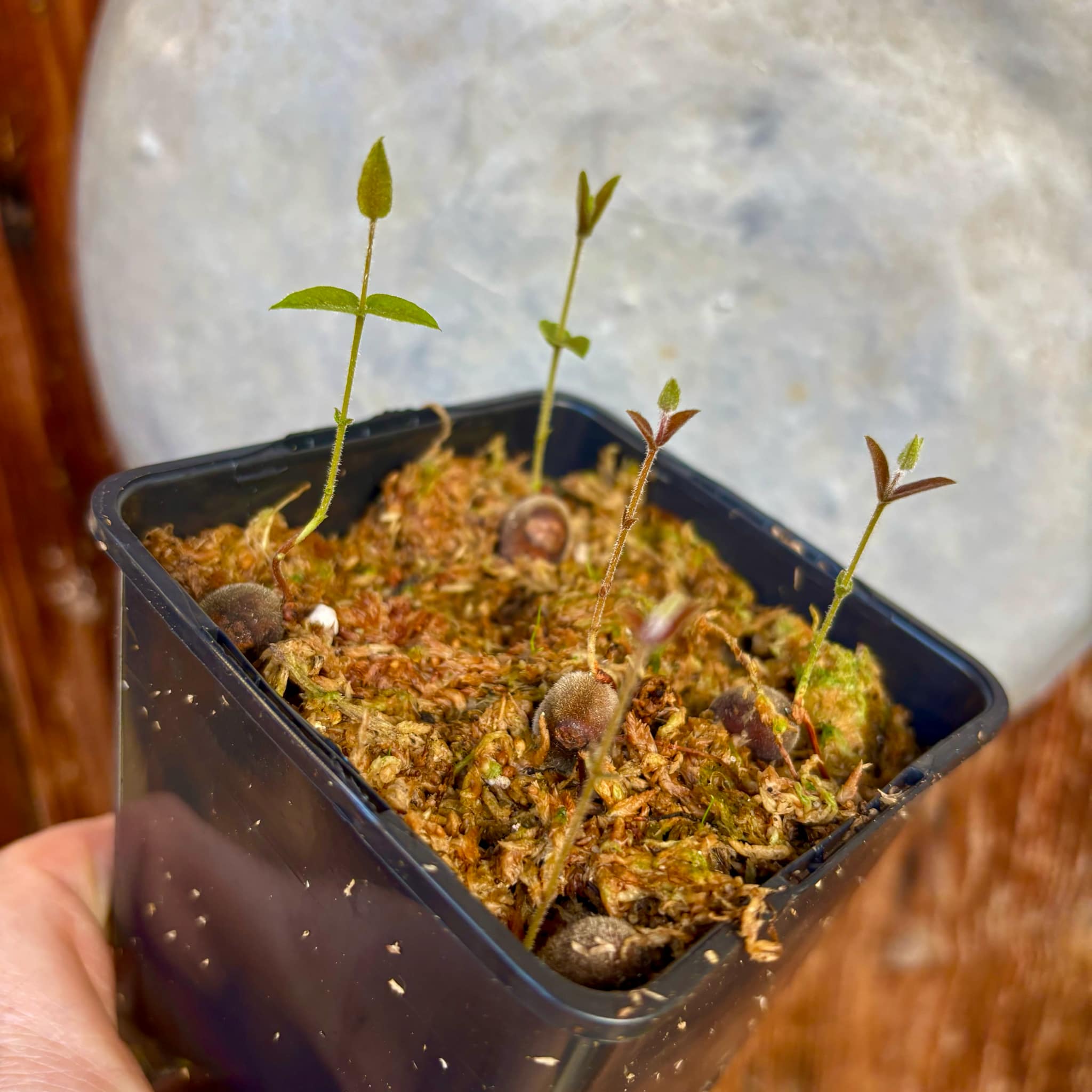Myrciaria caerulescens (Roxa - Blue Guaquiea) - 5 small seedlings in one pot / 5 kleine Sämlinge in einem Topf
Myrciaria caerulescens (Roxa - Blue Guaquiea)
Family / Familie: Myrtaceae
origin from / Herkunft: Brasil / Brasilien
Climate / Klima: temperate to warm (15-30C / 59-86F) / gemäßigt bis warm (15-30C / 59-86F)
Use / Verwendung: edible fruits, juice, jam, ice cream, etc. / essbare Früchte, Säfte, Marmelade, Eis usw.
you buy / sie kaufen: 5 small seedlings in one pot / 5 kleine Sämlinge in einem Topf
Delivery EU only
Important Notice
You can keep these 5 seedlings in this pot with sphagnum moss for a very long time.
It is best to pot each seedling individually into its own pot with sphagnum moss.
The plants can stay in the moss for over a year before being transplanted together with the moss into a pot with poor, sandy soil in the second year.
Introduction
Myrciaria caerulescens – formerly known as Myrciaria sp. roxa or Blue Guaquiea – is a fascinating discovery among exotic fruit plants.
In 2024, it finally received its scientific name. Its fruits are said to taste even better than those of the popular Jaboticaba.
Origin and Habitat
Native to the Caetité region in the Brazilian state of Bahia, where the climate is warm and features a distinct dry season.
The local soil is rich in iron and contains a high percentage of quartz sand.
Cultivation and Care
-
Substrate: Pure sphagnum moss is sufficient for the first two years.
-
Repotting: After about a year, the plants can be transferred together with the moss into sandy, poor soil.
-
Fertilization: No fertilizer needed or recommended.
-
Light: Prefers a bright location without harsh midday sun.
-
Temperature: Keep above 15 °C (59 °F) during winter.
-
Growth: Slow initial growth; later forms a compact shrub, perfect for container growing.
Special Features
-
Fruit: Outstanding flavor – reportedly even better than Jaboticaba.
-
History: From the "Blue Guaquiea" to the officially described Myrciaria caerulescens – a plant with history.
Practical Tip
One of our plants thrived healthily for over a year exclusively in pure sphagnum moss.
Wichtiger Hinweis
Ihr könnt diese 5 Sämlinge für sehr lange in diesem Topf mit Sphagnum Moos lassen.
Am besten topft ihr jeden Sämling einzeln in einen eigenen Topf mit Sphagnum Moos.
Die Pflanzen können darin über ein Jahr wachsen, bevor sie im zweiten Jahr gemeinsam mit dem Moos in einen Topf mit magerer Erde gesetzt werden.
Einführung
Die Myrciaria caerulescens – früher bekannt als Myrciaria sp. roxa oder Blue Guaquiea – ist eine faszinierende Entdeckung unter den exotischen Fruchtpflanzen.
Im Jahr 2024 erhielt sie endlich ihren wissenschaftlichen Namen.
Der Geschmack ihrer Früchte soll die beliebte Jaboticaba sogar übertreffen.
Herkunft und Standort
Die Heimat der Pflanze ist die Region Caetité im brasilianischen Bundesstaat Bahia, wo ein warmes Klima und eine ausgeprägte Trockenzeit herrschen.
Der Boden dort ist eisenhaltig und enthält viel Quarzsand.
Kultur und Pflege
-
Substrat: In den ersten zwei Jahren reicht reines Sphagnum Moos völlig aus.
-
Umtopfen: Nach etwa einem Jahr in Moos können die Pflanzen mitsamt dem Moos in sandige, magere Erde umgesetzt werden.
-
Düngung: Kein Dünger erforderlich oder empfohlen.
-
Licht: Ein heller Standort ohne direkte Mittagssonne ist ideal.
-
Temperatur: Überwinterung bei mindestens 15 °C.
-
Wachstum: Anfangs langsames Wachstum; später kompakter Strauch, sehr gut für die Kübelkultur geeignet.
Besondere Eigenschaften
-
Frucht: Hervorragender Geschmack – noch besser als Jaboticaba.
-
Geschichte: Vom "Blue Guaquiea" zum offiziell beschriebenen Myrciaria caerulescens – eine Pflanze mit Geschichte.
Praxistipp
Eine Pflanze aus unserer Anzucht wuchs über ein Jahr problemlos und gesund nur in reinem Sphagnum Moos.










